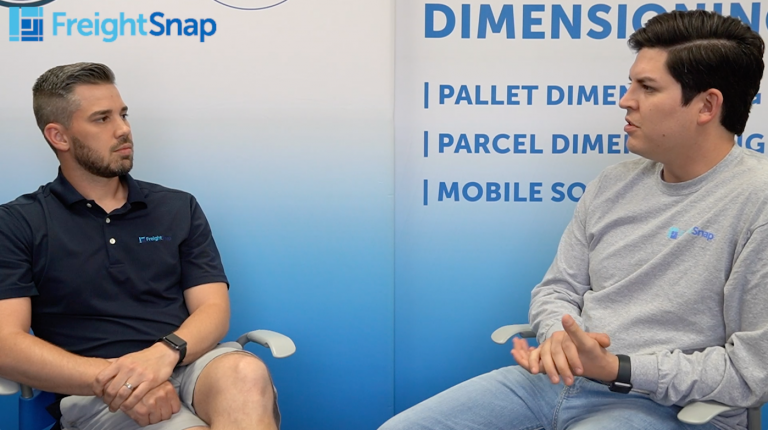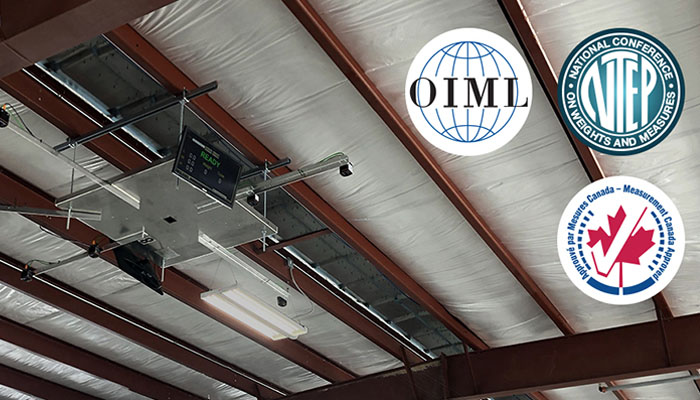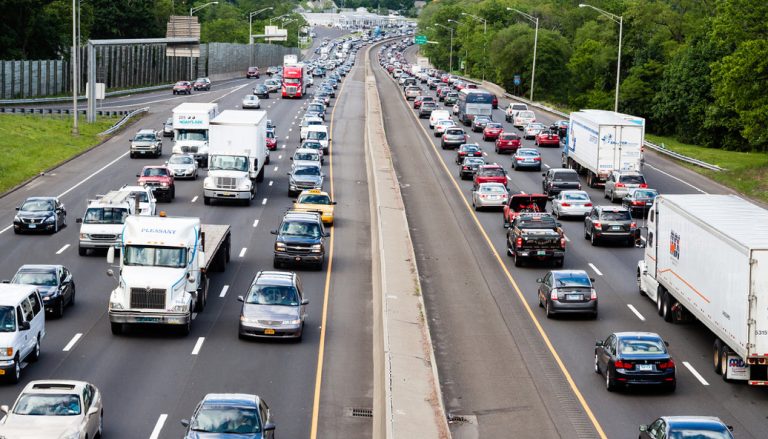In the fast-paced, fiercely competitive logistics industry, the demand for warehouse automation is more pronounced than ever. Businesses are constantly seeking ways to speed up delivery, minimize costs, and mitigate human error, with warehouse automation emerging as a compelling answer. Amid this dynamic landscape, adopting freight dimensioning systems—like FreightSnap’s FS 5000—can serve as a transformative catalyst, surmounting the challenges of large-scale operations and pricing, much like it has for various organizations managing expansive networks of terminals.
In this article, we’ll delve deep into the pivotal role that freight dimensioning systems play in enhancing warehouse automation. We’ll explore what these systems are, their alignment with broader warehouse automation trends, and the concrete benefits they bring to your operations. As we’ll uncover, integrating freight dimensioning systems extends beyond a mere technological upgrade—it’s a strategic initiative that could rocket your business into the logistics future.
So, whether you’re an industry veteran or a newcomer examining the potential of warehouse automation, this is designed to illuminate, inspire, and guide you towards harnessing the power of freight dimensioning.
The Rise of Warehouse Automation
In the not-too-distant past, warehouses were largely manual operations, with human hands performing everything from picking and packing to inventory management. Fast forward to the present day, and the landscape of warehousing has been transformed by automation. A myriad of technological advancements and market forces have driven this shift, pushing warehouse automation from an industry novelty to a near-necessity.
The catalyst for this transformation lies within the seismic shift in consumer habits and expectations. The e-commerce boom, turbocharged by the COVID-19 pandemic, has driven an insatiable demand for faster, more efficient delivery services. With recent data indicating a global growth rate of 8% in e-commerce, consumers now expect their orders to be processed within hours, not days, creating immense pressure on warehouses to operate at peak efficiency round the clock.

Additionally, rising labor costs and a chronic shortage of skilled warehouse workers have further amplified the need for automation. Recent reports indicate that half a million manufacturing job openings remain today, and the warehousing sector expects to experience 2.1 million unfilled jobs by 2030. Attracting talent is 36% harder today than it was in 2018, according to a survey by Deloitte. Coupled with the cost savings, round-the-clock operating potential, and increased productivity of automated systems, it’s clear that automation is a powerful tool to maintain competitiveness.
Yet, the appeal of warehouse automation is not solely based on economic factors. Equally important are the quality improvements that come with it. Automated systems bring a level of precision and accuracy that’s hard to achieve with manual processes. For instance, a study found automation can reduce picking errors almost entirely compared to manual operations. These benefits boost operational efficiency, making automation a crucial tool in the competitive warehousing landscape
Furthermore, automation can dramatically enhance warehouse efficiency. With advanced technologies like AI, machine learning, and IoT at the helm, systems can sort, store, and retrieve goods at lightning-fast speeds, optimizing workflows. According to a recent survey, automated and efficient warehouses were 76% more likely to boost inventory accuracy to 99% or higher and 40% more likely to consistently ship within one day of an order’s placement. These warehouses also managed to reduce labor costs by an average of 3% per year. This elevated level of operational efficiency is key to maintaining customer satisfaction and keeping pace with the relentless speed of e-commerce.
Indeed, warehouse automation is not merely a trend – it’s a paradigm shift in how we approach logistics and supply chain management. Despite some recent short-term impacts, the market is predicted to double from $36 billion in 2021 to $77 billion by 2027. Therefore, the question for many businesses is no longer if they should automate, but when and how. With forces driving its adoption continuing to intensify, it’s clear that automation’s role in the future of warehousing is undeniable.
Understanding Freight Dimensioning Systems
As businesses grapple with the need for speed, cost efficiency, and precision in logistics, the transformative potential of freight dimensioning systems is becoming increasingly clear. Tools like FreightSnap’s FS 5000 serve as catalysts in this evolving landscape, adept at overcoming the challenges of large-scale operations and complex pricing strategies. They have already proven their worth in various organizations, helping them manage expansive networks of terminals more effectively.
The FS 5000 uses advanced imaging and depth-sensing technology to measure parcels and pallets of various shapes and sizes in mere seconds. Its integrated weight scale captures the weight simultaneously, providing all the essential information in one quick step. Yet, what sets the machine apart is not just its accuracy and speed, but also its seamless integration capabilities. The data collected can be easily incorporated into Warehouse Management Systems (WMS), Transportation Management Systems (TMS), and other logistics software, facilitating real-time data access and informed decision-making.
In essence, freight dimensioning systems serve as an invaluable tool in the broader framework of warehouse automation. They streamline a vital process, enhancing speed, accuracy, and efficiency, ultimately leading to more effective warehouse operations.
The Intersection of Freight Dimensioning and Warehouse Automation
Understanding the unique role of freight dimensioning systems within the broader context of warehouse automation helps illuminate their true potential. These systems are not stand-alone gadgets; they’re integral components of a larger, interconnected network that aims to optimize every facet of warehouse operations.
At its core, warehouse automation is all about boosting efficiency and minimizing manual intervention. The FS 5000 slots perfectly into this goal, and here’s why:
- Increased Efficiency: By automating the process of measuring and weighing freight, these systems eliminate the need for labor-intensive, manual measurements. This not only frees up staff to focus on more strategic tasks but also significantly speeds up the overall process. Where manual measurements could take minutes per package, an automated system can complete the task in a matter of seconds.
- Enhanced Accuracy: Automated systems, by their very nature, are less prone to human error. This accuracy is critical when it comes to freight measurements, as small discrepancies can result in substantial miscalculations in storage, transport planning, and shipping costs.
- Data-Driven Decision Making: The precise measurements and weights collected by these systems can feed directly into Warehouse Management Systems (WMS) and other logistic platforms. This data can be leveraged to optimize storage space, enhance load planning, and streamline shipping calculations, facilitating more informed decision-making and efficient operations.
- Overall Efficiency Boost: The integration of freight dimensioning systems can have a cascading effect on overall warehouse efficiency. By accurately determining the dimensions and weight of a package, warehouses can better utilize storage space, leading to more efficient picking routes, which in turn can enhance overall productivity.
But don’t just take our word for it. The real-world impact of systems like the FS 5000 is reflected in the experiences of those who have put them to the test.
Consider the journey of Webb Estes, Vice President of Process Improvement at Estes Express Lines. He notes, “With our budget, we could purchase three FreightSnap units for every one of the competitor’s products. But once we found the right process and equipment mix, and management had a chance to see exactly how the data could help us, there was no going back.”
“As time went on, installs were easier, integration became seamless, and the product speed and operation continually improved. The collaboration with FreightSnap has really been amazing and we continue to partner with them to grow our dimensioning capabilities; we can clearly see the value in how they’re helping us. It’s been a good, strategic investment for us and a solid, strategic partnership with FreightSnap.”
Summing up, the alliance of freight dimensioning and warehouse automation paints a picture of a streamlined, efficient, and data-driven future for warehouses. By taking automation head-on in a key aspect of warehouse operations, freight dimensioning systems like the FS 5000 are set to redefine the performance and effectiveness of your entire warehouse operation.

Looking Towards the Future: Transforming Warehouse Automation
We’re on the precipice of an exciting era in the evolution of warehouse automation. Emerging technologies, such as artificial intelligence (AI), machine learning, and predictive analytics, are no longer mere concepts on the horizon. They’re here now, and are actively reshaping our operational realities, sparking a revolution of efficiency and data-driven insights.
Artificial Intelligence and Machine Learning: The Game Changers
AI and machine learning are at the forefront of this transformation, set to redefine all aspects of warehouse automation. They provide the ability to understand complex patterns, learn from discrepancies, and continually enhance operational accuracy. Imagine a warehouse where systems adapt autonomously to inventory changes, demand variations, and workflow adjustments—all while functioning flawlessly without the need for constant human intervention.
Predictive Analytics: The Compass to the Future
Predictive analytics is poised to become our most valuable navigational tool. With the vast array of data generated from automated processes, this technology can detect trends and foresee future needs. It could predict warehouse storage requirements, anticipate demand fluctuations, and enable proactive adjustments in shipping and delivery schedules. This forward-thinking approach will enable businesses to stay ahead of the curve.
Internet of Things (IoT): The Web of Connectivity
As the Internet of Things continues to expand, every aspect of the warehouse—from inventory tracking systems to automated forklifts—is destined to become a part of this interconnected network. This level of integration will create a seamless flow of information and automated processes, enhancing the operational efficiency and responsiveness of the entire warehouse.
Undeniably, the future of warehouse automation holds a wealth of untapped potential. Businesses that embrace these burgeoning technologies can transition from simply keeping pace with industry developments to leading the charge.
However, it’s important to remember that technology, while an invaluable tool, is not a cure-all. These systems should be implemented as part of a broader approach to warehouse management, which must include process optimization, workforce management, and a continued commitment to exceptional customer service.
As we step into this exhilarating new era, businesses that seamlessly incorporate these advancements won’t merely survive—they’ll thrive, leading the way in the continually evolving landscape of warehouse automation.
Final Thoughts: Plotting the Future of Warehouse Automation
We’ve learned a lot about warehouse automation, and two big ideas stand out. First, using technology in warehouses is not just a good idea—it’s a must for businesses that want to stay competitive in the fast-paced world of logistics. Second, while specific technologies like freight dimensioning systems are important, they’re just one part of a bigger picture that can revolutionize the way we work, cut costs, and increase accuracy.
Exciting tech like AI, machine learning, and predictive analytics are set to open up a world of possibilities in warehouse automation. These new technologies will not only improve how we do things now, but they could also offer groundbreaking insights for future operations.
Even with all these tech advancements, it’s key to remember that these systems are tools—they’re designed to strengthen your business. They should fit perfectly with your overall strategy, helping to improve your team’s work, boost customer service, and take your business to the next level in the logistics industry.
By embracing warehouse automation, you’re not just adjusting to changes in the industry—you’re taking charge of the future of logistics. This future is all about efficient operations, lower costs, pinpoint accuracy, and smart decision-making based on data.
Now’s the time to think about how your business can benefit from warehouse automation. Don’t just react to changes in the industry—predict them, prepare for them, and take control of them. The future of efficient operations is here!
Ready to jump into this exciting new world? Contact us at FreightSnap. We’re here to guide and support you on this exciting journey into the future of warehouse automation. Because at FreightSnap, we’re committed to crafting solutions that propel you forward.
For more articles like this, subscribe to our newsletter!
Was this article helpful?









